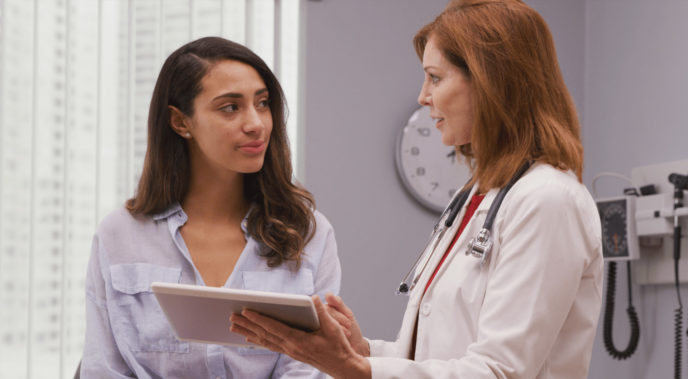
What Are the Causes of Adenomyosis and How is it Treated

Adenomyosis occurs when cells that line the uterus grow into the muscular tissue. Unfortunately, women with adenomyosis may experience painful, heavy bleeding during their menstrual cycles. While this challenging condition can be addressed in a number of ways, including hysterectomy, American Fibroid Centers offers a minimally invasive treatment called uterine artery embolization (UAE) to relieve your symptoms.
UAE involves placing a slender tube called a catheter to inject small particles into the uterine arteries. This blocks blood flow to the abnormal lining, causing it to shrink. If you have painful periods that interfere with your quality of life, we encourage you to contact our clinic in New York or New Jersey. We can offer safe and effective options for moving forward.
Understanding adenomyosis
The main causes of adenomyosis are not necessarily known, but some studies have shown that hormonal changes in estrogen and progesterone may trigger this condition. It is often diagnosed in Asian women, middle-aged women, and women who have previously had children. It’s important to meet with a specialist if you notice unusual symptoms during your menstrual cycle. Even if your issues are unrelated to adenomyosis, you may have a similar condition, such as uterine fibroids.
Known signs of adenomyosis include:
- Enlarged uterus
- Painful menstrual cramps
- Heavy menstrual bleeding
- Painful intercourse
- Pelvic pain
American Fibroid Centers is passionate about educating patients about adenomyosis so they can make well-informed decisions about their health. During your initial appointment in New York or New Jersey, one of our knowledgeable team members will assess your symptoms and determine whether adenomyosis is the cause of your pain. We may suggest uterine artery embolization to cut off the blood supply to the excess tissues so you can experience comfortable periods once again.
How uterine artery embolization works
Some medical professionals recommend a hysterectomy to treat adenomyosis. However, this technique is reserved for women who have finished building their families. Hysterectomy is also an invasive procedure and comes with its own set of risks, complications, and extended recovery times.
American Fibroid Centers is proud to perform uterine artery embolization without any of the risks associated with invasive techniques. Our treatment involves using innovative imaging technology to guide a tiny catheter into the uterine artery. This is what blocks blood flow to the abnormal lining causing your disruptive symptoms. UAE is an outpatient procedure, requires no general anesthesia, and comes with very little downtime.
What happens after UAE
Since uterine artery embolization for adenomyosis is minimally invasive, no hospital stay is needed. You may be monitored for a short period before being sent home. The staff at American Fibroid Centers can offer short but detailed instructions for recovering at home. You may experience minor side effects, like discomfort, fatigue, nausea, and vomiting, that should improve over the following 48 hours. We will schedule follow-up appointments as needed to monitor your progress.
Find relief from painful periods
While the causes of adenomyosis are not always known, this condition can be addressed without a hysterectomy. The team at American Fibroid Centers can shrink the problem areas over time to alleviate your symptoms. If you have issues like painful periods or heavy menstrual bleeding in New York or New Jersey, call our clinic to learn about the possibility of adenomyosis. We help each patient receive quality, personalized care.
Related Blogs & Videos
Learn more about vascular health, prevention, and care for Peripheral Arterial Disease.




